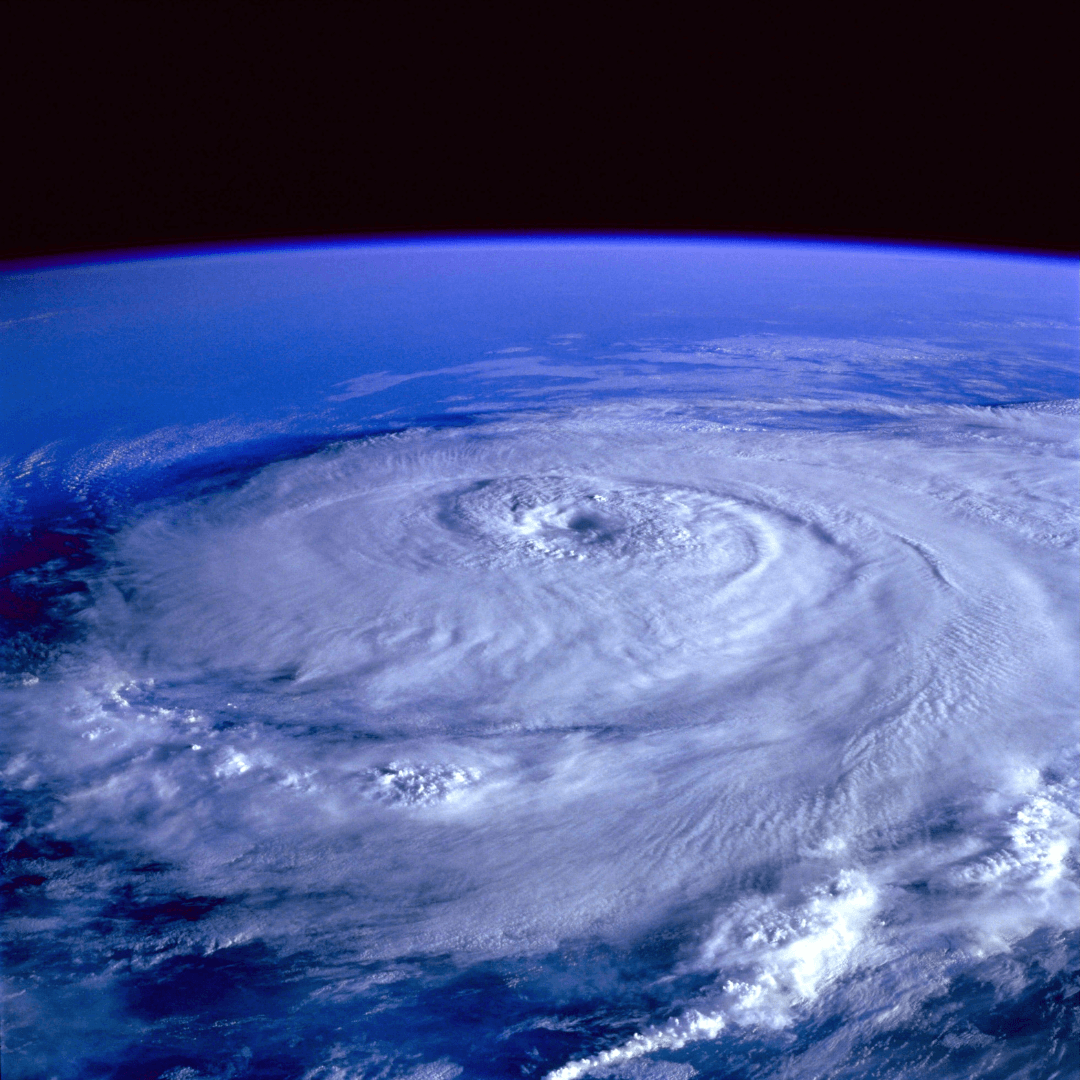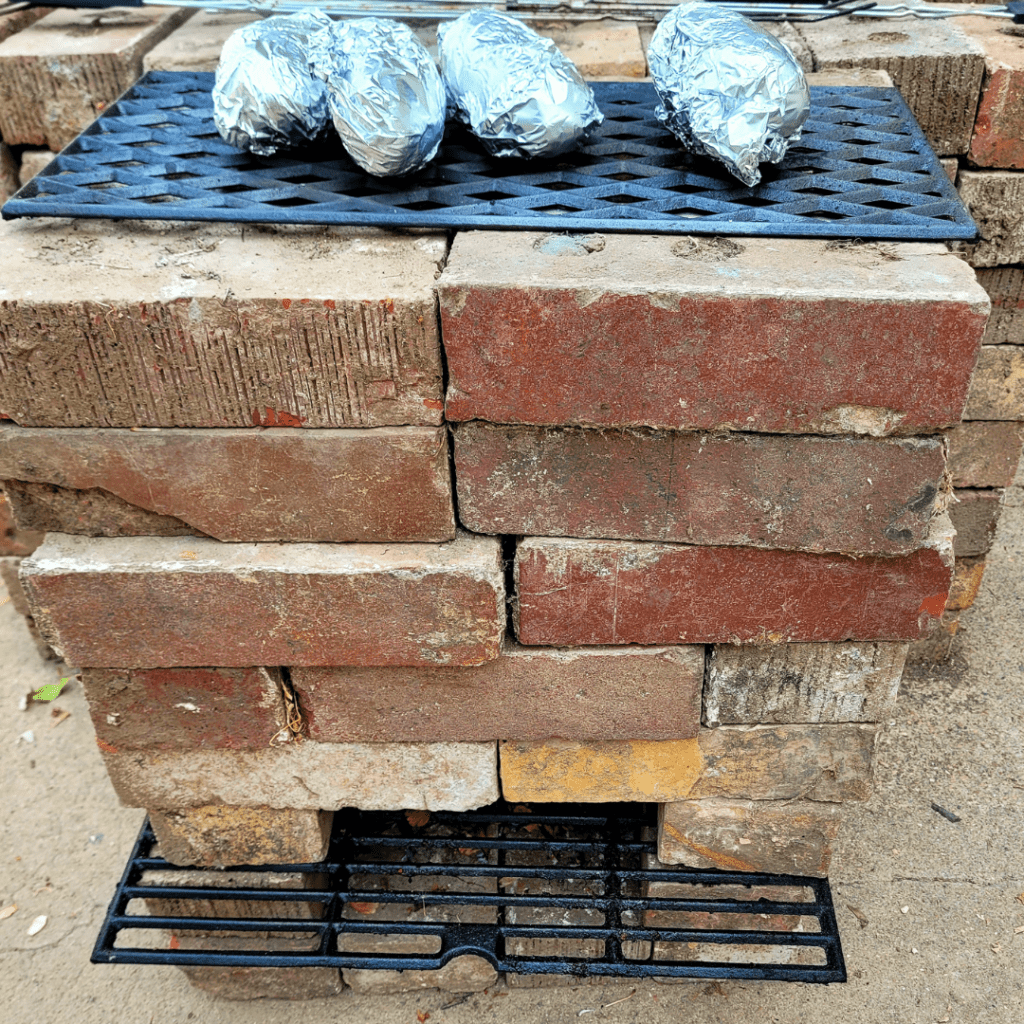Learn how my family survived a Category 4 hurricane not once, but twice! Discover practical hurricane survival tips, prep strategies, and lessons from real experience.
Have you ever wondered how you’d fare in the face of a Category 4 hurricane? For my family, this isn’t just a hypothetical question—it’s a reality they’ve lived through not once, but twice. The raw power of nature can be both awe-inspiring and terrifying, especially when you’re staring down the barrel of a monster storm.
In 2022 and 2024, Hurricanes Ian and Milton devastated my family’s community, leaving destruction in its wake. But thanks to their careful preparation and hard-earned lessons, they weathered the storm and came out stronger on the other side. Now, I’m here to share their story and the invaluable hurricane survival tips that kept them safe.
In this post, you’ll discover how to create a comprehensive emergency plan, prep essential supplies, and secure your home against nature’s fury. I’ll discuss strategies for dealing with storm surges, staying informed, and even how to bunker down to avoid potential looters. Whether you live in a hurricane-prone area or simply want to be prepared for any disaster, these tips could one day save your life. So, batten down the hatches and get ready to learn how to survive when Mother Nature unleashes her worst!
This is a pinnable post. Tap or hover over any image in this post to pin to your Pinterest Boards.
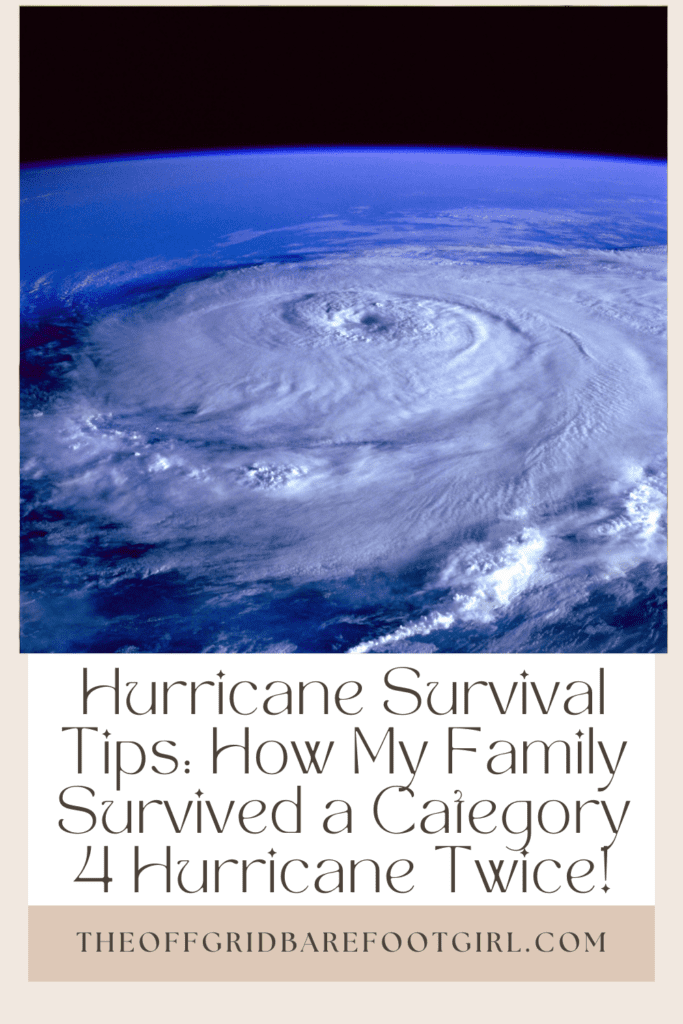
When Hurricanes Ian and Milton Devastated My Family in 2022 and 2024
Hurricanes Ian and Milton struck with unforgiving forces in 2022 and 2024, leaving my family reeling in its wake. As the Category 4 storms barreled towards their coastal home, they hurriedly implemented their emergency plan. They boarded up windows, secured loose items, and packed essential supplies. Despite their preparations, the sheer intensity of Ian’s and Milton’s winds and storm surge caught them off guard.
Their home, once a sanctuary, became a battleground against nature’s fury. Water seeped through every crack, and the howling winds threatened to tear their roof away. For hours, they huddled in their safe room, listening to the chaos outside and praying for it to end.
When the storm finally passed, they emerged to a scene of utter devastation. The neighborhood was unrecognizable, with homes destroyed and debris scattered everywhere. The road to recovery seemed insurmountable, but our family’s resilience and community support became their lifeline in the aftermath.
It was hard to watch the news destroy their whole city in Port Charlotte, Florida twice! I was unable to hear from them knowing that they were entering the eye of the hurricane when I was all the way in Utah and safe from the storm. Then we lost all contact. Thankfully, they all survived and their home was intact both times! But how did they survive and weather these chaotic storms? Let’s take a look at some of the hurricane survival tips we can learn from them!
Understanding the Threat: Preparing for a Category 4 Hurricane
The Basics of a Category 4 Hurricane
Whoever named hurricanes must have been feeling very friendly that day. I mean, a Category 4 hurricane sounds like something straight out of a disaster movie, not your old next-door neighbor who tries to invite you over for afternoon tea. But in reality, it’s a serious weather phenomenon that can cause significant damage and demands a threatening name to make people take it seriously.
So, let’s break it down. A Category 4 hurricane is on the higher end of the hurricane intensity scale, with wind speeds ranging from 130 to 156 miles per hour. These bad boys can leave a trail of destruction in their wake, so it’s important to take them seriously and be prepared, no matter how friendly their names may sound!
Assessing Your Vulnerability
Okay, so now you know what a Category 4 hurricane is, but how do you know if you’re at risk? Well, assessing your vulnerability is key. Take a good look at where you live and ask yourself some important questions. Are you near the coast? Are you in a flood-prone area? Do you have large trees that could become airborne projectiles in high winds? By understanding your vulnerability, you can better prepare for the storm and make informed decisions about evacuation or sheltering in place. Also, listening to your local weather authorities and their instructions is important!
Your location plays a crucial role in your risk level. Coastal areas and low-lying regions are particularly susceptible to storm surges and flooding. Evaluate your home’s structural integrity and identify potential weak points.
Identifying Potential Hazards: Hurricane Survival Tips
Hurricanes can be sneaky little devils, bringing all sorts of hazards along with them. It’s like they throw a party and invite their friends: strong winds, heavy rain, storm surge, and even tornadoes. So, it’s crucial to identify potential hazards and come up with a plan to deal with them. Look around your property and see if there are any loose objects, like patio furniture, that could turn into projectiles. (Outdoor furniture can turn into dangerous missiles!) Check if you have any weak spots in your home, like windows that might need reinforcing. Being proactive and addressing these hazards ahead of time can save you a lot of trouble when the storm hits.
Creating a Comprehensive Emergency Plan
Establishing a Family Emergency Meeting Point
Creating a comprehensive emergency plan is crucial for surviving a hurricane. Start by establishing a family emergency meeting point, both inside and outside your home. This ensures everyone knows where to gather if separated during the chaos.
Next, designate emergency contacts, including an out-of-area friend or relative who can serve as a central point of communication. This person can relay messages between family members if local lines are down. That was my job from Utah and my parents and other sister’s job from Ohio.
Developing communication strategies is equally important. Consider using text messages instead of calls, as they’re more likely to get through when networks are overwhelmed. Agree on a specific time to check in with each other and your designated contact.
Remember, a well-thought-out plan can make all the difference when facing a hurricane.
Designating Emergency Contacts
In the age of smartphones, we often take for granted that we can reach anyone, anytime. But during a hurricane, that little device might become as useful as a paperweight. That’s why it’s important to designate emergency contacts who live outside the affected area. Make sure everyone in the family knows who to call to let them know you’re safe and sound.
Developing Communication Strategies
Communication is key. When the storm hits, it’s crucial to have a plan for staying connected with your loved ones. If phone lines are down, a good old-fashioned walkie-talkie or a battery-powered radio can be a lifeline. Having multiple methods of communication can ensure that you’re not left in the dark during the storm. Plus, it’s always handy to have a backup plan when technology fails us.
And boy did technology fail us when my sister and her family entered the eye of the hurricane. That is when we lost all contact with them. It would not be for a week until we will be lucky to hear from them. Florida lost all power and myself and other family members filled out the online search and rescue form to be notified when they have been found and are safe. We were lucky to have heard from them once they were able to post a quick update on Facebook from a weak WIFI connection to mark themselves safe.
Prepping Food, Water, and Supplies: Hurricane Survival Tips
When it comes to hurricane survival, proper food and supply storage is crucial. Keeping your essentials in water-tight containers not only protects them from potential flooding, but also ensures they’re easily accessible during the storm. Distribute these containers throughout your home, placing them in various rooms and on different levels. This strategy serves two purposes: it prevents all your supplies from being lost if one area of your house is damaged, and it provides quick access to necessities regardless of where you’re sheltering.
Consider using plastic bins with tight-fitting lids or even large, sealable bags for smaller items. Store non-perishable foods, bottled water, flashlights, batteries, first-aid supplies, and important documents in these containers. Don’t forget to include comfort items like books or games to help pass the time during long hours indoors. Place all of these secured items on tables and counters to keep them off of the floors when the floods come.
Food and Supplies Prepping Tips
- When preparing for a hurricane, it is essential to waterproof your food and supplies in case the flood waters and rain invade your home. Store canned foods in water-tight containers by layering a ton of canned foods in rows inside the containers.
- In another water-tight container, keep can openers, utensils, bowls, and plates. Try not to store paper products just in case.
- Keep your bottled water safe from contaminated stormwater by also storing them in water-tight containers. Lay them flat in stacks in order to store as many as possible.
- Keep a water-tight container filled with solar lights, batteries, LED candles, matches, first aid kits, toiletries, personal hygiene supplies, medications, and anything else that is important for survival after the storm in case your home gets destroyed.
- Be sure to keep a separate water-tight container for your pet food and supplies. Pet food can get wet and destroyed. You will need to feed them after the storm so keep some pet food packed away as well.
- You can stack all of your water-tight containers neatly in a closet or your pantry. Then place them high on tables and counters during your hurricane prep before the storm hits.
- It is a good idea to keep a few different stacks of these items in various areas of your home just in case something happens to that part of your home. Sometimes they could get buried and you are unable to reach that area of your home.
Here are some more information for building your emergency supplies.
- SHTF Prepper’s Pantry List: Apocalypse-Proof Your Food Supply Now!
- Practical Pantry Prepper: Essential Guide
- A Comprehensive Guide to Wildfire Survival: Best Ways to Survive
- What Should Be in A 72-Hour Survival Kit?
Gathering Essential Supplies and Resources
Creating a Hurricane Survival Kit
When preparing for a hurricane, assembling a comprehensive survival kit is crucial. Include essentials like flashlights, batteries, a hand-crank radio, and a multi-tool. Don’t forget cash, important documents, and a portable charger for your devices.
You need to gather all the essential supplies to keep you and your family comfortable and safe. Don’t forget to create a hurricane survival kit that includes enough non-perishable snacks to survive a zombie apocalypse. Trust me, when the storm hits, you’ll thank yourself for being so prepared. And don’t forget to tell yourself over and over, “I will not eat my hurricane snacks early!”
Stockpiling Non-perishable Food and Water
Forget the fancy gourmet meals during a hurricane. It’s all about survival mode, people. Stock up on non-perishable food items like canned goods, granola bars, and peanut butter. And don’t forget to hoard water like a doomsday prepper (within reason, of course). Aim for at least one gallon of water per person per day to keep everyone hydrated and prevent any dehydration-induced family feuds. Remember, it’s better to be well-fed and slightly bored than hungry and hangry during a hurricane. Also, rotate your stockpile regularly to ensure freshness.
Essential Medications and First Aid Supplies
If you have family members who depend on medications, make sure you have enough to last through the storm. Running out of important meds during a hurricane is not only inconvenient, but also potentially dangerous. Be sure to include a supply of any necessary prescriptions, as well as basic first aid supplies like bandages, antiseptic solutions, and pain relievers. And don’t forget to throw in some extra Band-Aids for those inevitable paper cuts when you’re opening all those cans of beans.
Bunkering in to Avoid Looters
Homeowners in hurricane-prone zones are faced with the chance of having their homes looted during and after storms, if they decide to evacuate. While this is not fair, it does happen and you should be prepared for possible looters.
You could be faced with the decision of staying or going when an evacuation order is in place for your area. It is a tough decision and could be a life or death decision, a decision that nobody should have to make.
If you are able and choose to stay in your home during the evacuation order of a hurricane, you can reduce the risk of your home being a target for looters.
Should you decide to stay and bunker in, which I am not making this decision for you, I want to help you be prepared to face the storm.
Besides taking the tips of waterproofing your food and supplies as mentioned previously, it is a good idea to prepare your home and make it hurricane-safe and fortify it. Keep in mind, that if things turn for the worse, you could risk the lives of others such as rescue teams who have to come in and save you and your family because you stayed behind.
You can fortify your home by securing your shingles, securing your garage door, installing wind-resistant aluminum shutters, trimming overhanging tree branches over your home, water-seal your roof and attic windows, securing your chimney to the housing structure, and placing sandbags up against the perimeter of your home.
If you have been given an evacuation notice in your area, it is a good idea to leave before the exit routes are limited or unavailable. You can still fortify your home for the hurricane and make it look as if you are home to keep looters at bay.
If your home does in fact get looted, just remember material items are replaceable and you and your family are not!
Fortifying Your Home: Hurricane Survival Tips

- Secure shingles.
- Secure garage doors.
- Install wind-resistant aluminum shutters.
- Trim overhanging tree branches over the home.
- Water-seal roof and attic windows.
- Secure the chimney to the housing structure.
- Line sandbags around the perimeter of the home.
Securing Your Home: Precautionary Measures
Reinforcing Windows and Doors
You know those windows that let in all that lovely natural light? Well, during a hurricane, they can turn into a not-so-lovely force of destruction. So, take a moment to reinforce your windows and doors before the storm arrives. Boarding up windows, or installing storm shutters, can help prevent them from shattering and turning your living room into a wind tunnel. And while you’re at it, reinforce those doors too. No one wants to see their front door deciding to take a little trip down the street.
Clearing the Surrounding Area
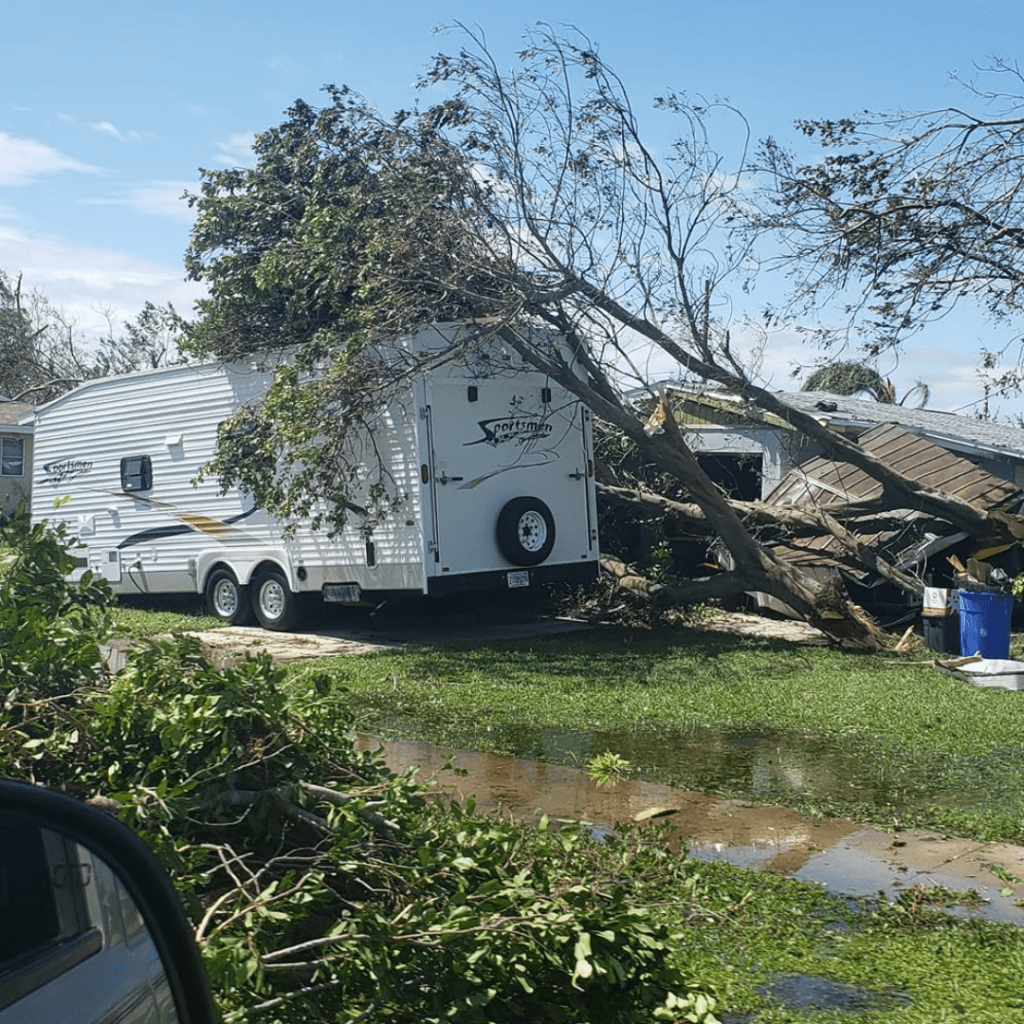
Before a storm hits, remove any loose items from your yard, like patio furniture, potted plants, and that old trampoline that’s been collecting spiderwebs since 2010. Trust me, you don’t want those objects flying around like they’re auditioning for a superhero movie. Also, don’t forget to trim any overhanging branches that could turn into unwanted visitors crashing through your roof.
Protecting Valuable Belongings
When a hurricane is knocking at your door, it’s a good idea to protect your most treasured possessions. Consider placing important documents, sentimental items, and irreplaceable photographs in waterproof containers or sealable bags. And if you’re really committed to securing your valuables, you can even move them to a safer location, like a sturdy, high shelf or a bank vault (although the latter may require some extra coaxing). Remember, you can always buy new furniture, but your grandmother’s antique photo album is irreplaceable.
Prepping for the Storm Surge: Hurricane Survival Tips
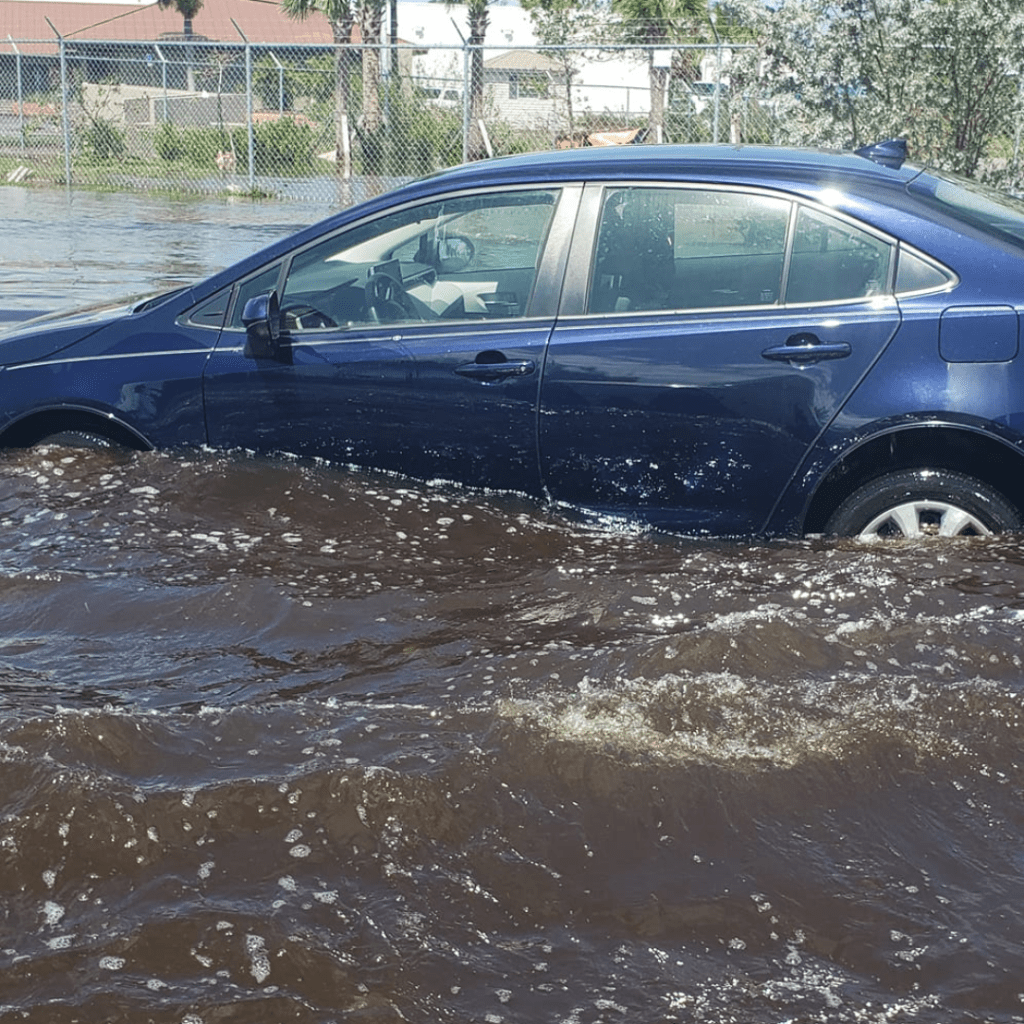
A storm surge is water that is pushed inland by a hurricane and can enter homes in a matter of minutes during a hurricane with tremendous power. Storm surge water can carry away vehicles and sweep away anything in its path! What makes storm surge water dangerous is that its power is carried with heavy and damaging debris that can destroy homes.
When it comes to hurricane survival, preparing for the storm surge is crucial. This powerful wall of water can cause devastating damage and pose a significant threat to life. To safeguard your family and property:
- Know your evacuation zone: Familiarize yourself with local evacuation routes and follow official instructions.
- Elevate valuables: Move important items to higher floors or raised surfaces.
- Install flood barriers: Consider temporary or permanent flood protection for doors and windows.
- Secure outdoor items: Bring in or tie down furniture, decorations, and potential projectiles.
- Prepare an emergency kit: Include essentials like water, non-perishable food, medications, and important documents.
Remember, your safety is paramount. Don’t underestimate the power of storm surge – when in doubt, evacuate to higher ground.
Staying Informed: Monitoring Weather Updates and Evacuation Orders
When facing a hurricane, staying informed is crucial for your safety. Utilize reliable sources like the National Hurricane Center and local weather stations for accurate updates. Understand your evacuation zone and familiarize yourself with designated routes to ensure a smooth departure if necessary.
If you’re ordered to evacuate due to storm surge but choose to stay, remember that this decision can be life-threatening. Prepare for the worst by moving to higher ground within your home and having an escape route planned.
To survive a storm surge:
- Stay away from windows and exterior walls.
- Seek shelter in an interior room on the highest floor.
- Have emergency supplies ready, including food, water, and a first-aid kit.
- Keep important documents in a waterproof container.
- Stay tuned to local news for updates and further instructions.
Remember, your safety is paramount. Always follow official advice and evacuate when instructed to do so.
Utilizing Reliable Sources for Weather Updates
When facing the wrath of a Category 4 hurricane, staying informed is crucial. But let’s face it, not all sources are created equal. While your neighbor’s weather app might be entertaining, it’s best to rely on established and reliable sources. National Weather Service or local meteorological websites and apps are your best bet for accurate and up-to-date information. Trust the professionals who spend their days studying weather patterns, not your cousin who claims to have predicted the last tornado with her achy knee.
Understanding Evacuation Zones and Routes
When evacuation becomes necessary, having a well-thought-out plan is crucial. Start by packing emergency essentials like non-perishable food, water, medications, and important documents in waterproof containers. Don’t forget flashlights, batteries, and a battery-powered radio.
Before leaving, secure your home by boarding up windows, bringing in outdoor furniture, and turning off utilities. Remember to fill up your car’s gas tank and have cash on hand.
For pet owners, ensure your furry friends’ safety by including them in your evacuation plan. Pack their food, water, medications, and vaccination records. Many shelters don’t accept pets, so research pet-friendly options in advance.
By following these strategies, you’ll be better prepared to evacuate safely and protect your loved ones during a hurricane.
Following Local Authorities’ Instructions
In times of crisis, it’s best not to improvise. When local authorities issue evacuation orders, it’s not an invitation to host a hurricane-themed party. It’s a serious call to action. So, put down your hurricane cocktails and listen up. Follow their instructions to the letter. They have the experience, the knowledge, and the stylish uniforms for a reason. Trust the professionals and get yourself and your loved ones to safety.
Evacuation Strategies: Ensuring Safe Passage for Your Family
Packing Emergency Essentials
When it comes to surviving a hurricane, packing is not the time to channel your inner fashionista. Leave the trendy outfits at home and focus on the essentials. Pack enough non-perishable food, water, medications, and clothing for several days. Throw in a first aid kit, flashlights, extra batteries, and a radio for good measure. Oh, and don’t forget the snacks because a hurricane without snacks is just cruel.
Securing Your Home Before Leaving
Again, before you leave on your hurricane evacuation adventure, take some time to secure your home. Board up windows, move outdoor furniture and potted plants indoors, and secure any loose items in your yard that could become projectile weapons. And don’t forget to shut off utilities like gas and electricity to prevent any unpleasant surprises upon your return.
Planning for Pet Safety
Let’s not forget about our furry friends! Hurricanes can be stressful for pets too. Make sure you have a well-stocked pet emergency kit and plan ahead for their safety. Find pet-friendly evacuation options or designate a safe area in your home where they can hunker down.
If You Have Been Ordered to Evacuate in Anticipation of a Dangerous Storm Surge and You Decide to Stay, Remember This:
- You will not be able to call 911 as nobody will be able to reach you until after the storm.
- If storm surge can carry your vehicle away, it will also take you too.
- Storm surge can enter your home quickly and trap everyone inside with its power and debris.
How to Survive a Storm Surge
- Keep all power off in your home.
- Do not drive through flood waters.
- Keep to high ground.
- Stay out of the water as much as possible (it’s dangerous, cold, and disgusting!)
- Evacuate before it’s too late! Even if you can only make it further inland, do it!
Weathering the Storm: Maintaining Safety and Sanity During a Hurricane
Staying Indoors: Creating a Safe Space
When the hurricane hits, hunkering down becomes the name of the game. Find the safest spot in your home, preferably away from windows and on a lower level. Stock it with essentials like food, water, blankets, and games to keep everyone occupied. And remember, if the hurricane starts to sound like Aunt Mildred’s singing voice, seek shelter elsewhere.
Managing Power Outages
Power outages are inevitable during hurricanes. My family relied on battery-powered lanterns and a small generator for essentials. Pro Tip: charge all devices beforehand and use them sparingly. A hand-crank radio became our lifeline for updates.
Coping with Emotional Stress
Hurricanes can be emotionally draining. Whether it’s fear, anxiety, or the sheer frustration of not having access to your favorite Netflix series, emotions will run high. Take time to check in with yourself and your loved ones. Be patient, provide support, and maybe throw in a lighthearted joke or two to lighten the mood. Laughter has been scientifically proven to help cope with almost anything, including hurricanes.
My family found comfort in family games and storytelling. Deep breathing exercises helped manage anxiety. Remember, it’s okay to feel scared – support each other and stay positive. The storm will pass.
By the way, later after Hurricane Milton, I heard my niece and her boyfriend enjoyed a rooftop party…yeah.
After the Storm: Dealing with Cleanup and Restoration Efforts
Assessing Damage and Ensuring Safety
After the storm has passed, it’s time to face the aftermath. Assess the damage to your property and prioritize safety. Watch out for downed power lines, avoid standing water, and be cautious of any structural damage. Remember, you’re not a superhero, so leave the dangerous tasks to the professionals. And if your neighbor’s yard ends up in your living room, don’t forget to give them a friendly wave. After all, community spirit is what makes disaster recovery so charming, right?

Preparing for Long-Term Power Outage
My sister was without power for at least a month after Hurricane Ian. While she had a generator, she and her family stayed in line for seven hours just to get gas to run it! To avoid long lines to get gas, it is a good idea to keep a stock of gasoline in a safe place to use after the storm for your generators.
It is also a good idea to store propane or lighter fluid and charcoal for your grill to cook your food during the power outage, even if all you have is canned food.
Light your rooms at night with LED candles and solar lights that are kept charged in the sunlight during the day. Place charged solar lights in your bathrooms, kitchen, walkways, and children’s rooms to help keep your home well-lit during the night hours until the power is restored.
Preparing for a Long-Term Power Outage
- Store lighter fluid, charcoal, and propane for outdoor cooking.
- Keep a supply of LED candles and solar lights to help keep your home well-lit.
- Arrange to keep your generators handy and a good supply of gasoline.
After the Storm: Dealing with Cleanup and Restoration Efforts
After the storm passes, it’s time to assess the damage and begin the cleanup process. Safety should be your top priority during this phase. Start by carefully inspecting your property for hazards like downed power lines, gas leaks, or structural damage. Wear protective gear, including sturdy shoes, gloves, and a mask, to guard against potential injuries or health risks.
Document all damage thoroughly with photos and videos for insurance purposes. Begin with small, manageable tasks like removing debris from walkways and driveways. As you work, be mindful of hidden dangers such as sharp objects or unstable structures. Remember, restoration is a marathon, not a sprint. Take breaks, stay hydrated, and don’t hesitate to seek help from professionals or volunteers when needed.
Surviving two Category 4 hurricanes is no small feat, and my family’s experience has taught them invaluable lessons. They’ve learned that preparation is key, from stocking up on non-perishable food and water to securing important documents in waterproof containers. Staying informed through weather updates and heeding evacuation orders when necessary can make all the difference. During the storms, they discovered the importance of having a safe room and maintaining a calm demeanor, especially for the children’s sake. In the aftermath, they found that community support and resilience were crucial for recovery. These experiences have not only made them more prepared for future disasters, but have also strengthened their family bond and our connection with their neighbors.
Conclusion
As we’ve explored the harrowing experiences of surviving Category 4 hurricanes, it’s clear that preparation is key to weathering these powerful storms. From creating a comprehensive emergency plan to securing your home and gathering essential supplies, every step counts in safeguarding your family. Remember, staying informed and being ready to evacuate if necessary can make all the difference. The aftermath of a hurricane can be challenging, but with proper planning, you can navigate the cleanup and restoration process more effectively.
These survival tips aren’t just theoretical – they’re battle-tested strategies that have helped real families, including mine, survive nature’s fury. I encourage you to take action today: review your emergency plans, stock up on supplies, and discuss evacuation routes with your loved ones. Don’t wait until a storm is on the horizon to start preparing. By taking these steps now, you’ll be better equipped to face whatever Mother Nature throws your way. Stay safe, stay prepared, and remember – with the right knowledge and preparation, you can weather any storm life brings your way.
Learn how to take your emergency planning to the next level by reading The Complete Guide to Emergency Preparedness: Everything You Need to Thrive in Any Situation.
Resources: Here are some helpful resources for further information.
- Hurricane Safety Tips – By Mass.gov
- What to Do Before the Tropical Storm or Hurricane – By National Weather Service
- Preparing for Hurricanes or Other Tropical Storms – By Centers for Disease Control and Prevention
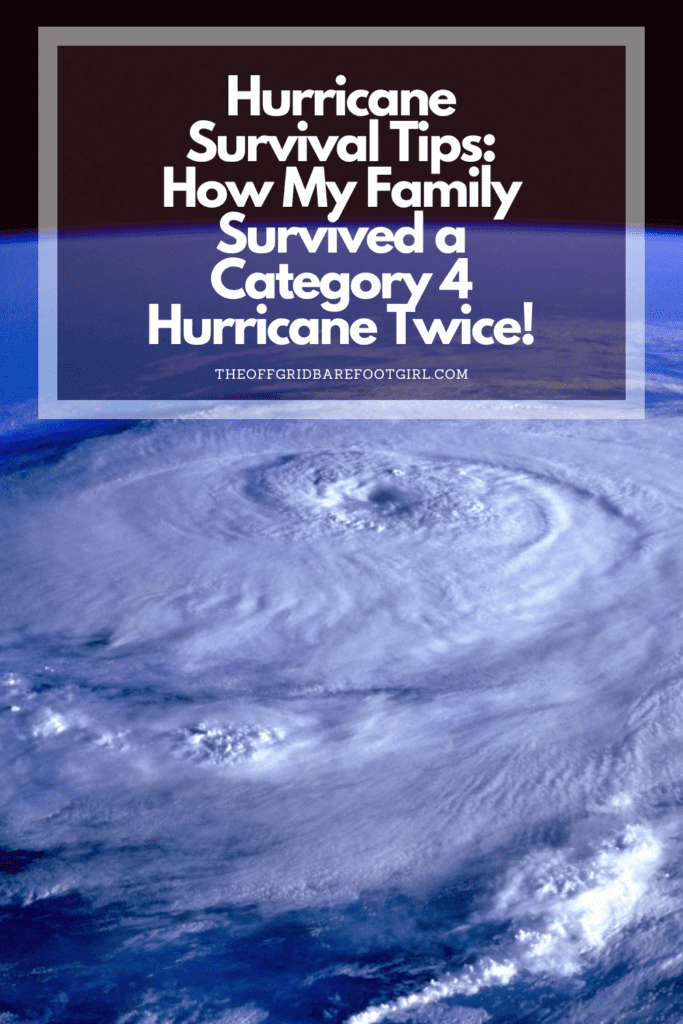
Frequently Asked Questions
1. How long does it take to prepare for a Category 4 hurricane?
Preparing for a Category 4 hurricane requires careful planning and can take several days to complete. It is recommended to start preparations as soon as a hurricane watch or warning is issued to ensure you have enough time to gather essential supplies, secure your home, and create an emergency plan.
2. What should I include in my hurricane survival kit?
Your hurricane survival kit should include essential items such as non-perishable food, bottled water, flashlights, batteries, a first aid kit, necessary medications, important documents, cash, and personal hygiene items. It is also advisable to include extra clothing, blankets, and a portable phone charger.
3. Should I evacuate if a Category 4 hurricane is approaching?
If local authorities issue an evacuation order, it is crucial to follow their instructions and evacuate immediately. Category 4 hurricanes pose significant threats and staying in a vulnerable area can be extremely dangerous. Always prioritize the safety of yourself and your family and have an evacuation plan in place.
4. How can I cope with the emotional stress of enduring a hurricane?
Enduring a hurricane can cause emotional stress and anxiety. It is important to stay connected with loved ones, seek support from community resources, and practice self-care. Taking breaks from watching the news, engaging in stress-reducing activities, and talking to others about your feelings can all help manage the emotional toll of a hurricane.A Comprehensive Guide to Wildfire Survival: Best Ways to Survive
Summary
I hope I have inspired you to live sustainably with these tips and products.
If you were encouraged by this post, I invite you to check out my FREE Printables Page for fun free printables, planners, and charts.
ENTER MY FREE Printables Page HERE
Here are some more of my gardening inspiration posts to check out!
How to Feed Your Family During the Government Shutdown
12 Best Tips for Creating an Eco-Friendly Household
Survival Lessons from the Great Depression
The Best 15 Homesteading Blogs to Follow for Inspiration
How to Criminal-Proof Your Home with These 5 Steps
How to Create Your Cottagecore Aesthetic Dream Home
Ideas for Rustic Living Room Vibes You’ll Love All Year Round!
How to Prep Your Home for Chilly Fall Nights
Bring Back the Magic of Fireflies and Lightning Bugs with Solar Power!
The Ultimate Portable Power Bank for Homesteaders and Preppers!
A Bug Out Bag That’s Actually Ready — When You Need It Most!
Magical Ways to Use Fairy Lights in Your Off-Grid Home
How to Live a Cozy Off-Grid Life
The Best Off-Grid Kitchen Tools for Indoors (No Power Needed!)
DIY Solar Made Simple: How I Powered My Off-Grid Life with Practical Preppers!
Sleeper Cells in America: What You Need to Know Now!
How People Are Surviving in Broken Cities with Broken Systems
When the World Hurts, We Prepare with Purpose
How to Live On Raw Land: Everything You Need to Know!
How to Do Off-Grid Laundry with Eco-Friendly Laundry Detergent!
Hollywood on Fire! What Secrets Are In the Ashes?
FEMA Concentration Camps? Are Echos of the Past Returning?
How Likely Is a Russian EMP? One Pulse Could Black Us Out!
What Dark Secrets Lie in The Bird Flu Symptoms?
The Blackout Sun: Who Is Blacking Out Our Sunlight?
More Posts!
How to Bug-In During a Deep Freeze!
‘FOGVID-24?’ What’s in the Mysterious Fog That’s Making Everyone Sick?
From Snow to Sow: Plan Your Spring Garden Now!
11 Fun Ways to Brighten Your Spring Garden with Personality
Top 10 Spring Garden Crops to Harvest in 30 Days and Eat Now!
The Best Survival Crops for Caloric Survival
More Posts!
My Victory Garden: What I Learned from 5+ Years
Why Every Family Should Have a Victory Garden in Their Backyard Now!
The Best Perennials for a Long-Term Survival Garden
The Best Essential Oils for Plants That Repel Garden Bugs
How to Grow Green Garden Peas: Perfect Plump Peas!
Hugelkultur: Does This Epic Pioneering Method Actually Work?
9 Ways to Celebrate Earthing Day in Your Garden!
Gardening Indoors: Secrets of Growing Your Food Inside!
How to DIY a Milk Jug Drip Irrigation System!
Why Cedar Mulch Is The Perfect Natural Weed Barrier
Gardening Projects
Onions: How to Grow Onions for Storage
Peas: How to Grow Garden Peas for a Bumper Crop
Carrots: How to Grow Carrots for a Bountiful Harvest
Prep Your Garden for Spring Planting with These Expert Tips!
How to Grow a Prepper Garden to Survive and Thrive
The Best Garden Tools You Need for a Productive Season
Fastest Growing Vegetables for Your Survival Garden
How to Grow Marigolds As Pest Control In Your Vegetable Garden
Must-Have Tools for a Successful Balcony Vegetable Garden
How to Effectively Combat Powdery Mildew in Your Garden
The Best Tips for Organic Gardening
How to Release Ladybugs In Your Garden for Organic Pest Control
More Posts!!
The Best Garden Snail Control Strategies
The Best Spring Vegetables to Grow in Your Garden
Seed Starter Mix: How To Make Your Organic Seed Starter Mix At Home
How to Grow a Productive Canning Garden
How to Plant and Grow a Salsa Garden
Easiest Heirloom Vegetable Seeds to Grow Now
How to Use the Hand Twist Claw Tiller: Tackling Tough Soil
More Fun Gardening Posts to Check Out!
Planning Your Garden: How to Plan a Vegetable Garden: Expert Green Thumb Tips!
Winterizing the Garden: How to Winterize Your Vegetable Garden: Step-by-Step Checklist
Mulching the Garden: How to Make Leaf Litter Mulch
Grow a Pumpkin Patch: How to Grow a Pumpkin Patch in Your Backyard
How to Grow a Fall Garden: 9 Best Fall Crops
Clever Ways to Incorporate Indoor Composting into Your Home
How to Start Composting for the Garden: A Step-by-Step Guide
The Ultimate Guide to Composting in Your Suburban Backyard
Why I Built A Survival Garden in My Backyard
16 Best Medicinal Herbs to Grow in Your Garden Now
Blessings,
The Off Grid Barefoot Girl

